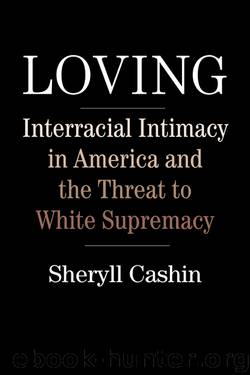Loving by Sheryll Cashin

Author:Sheryll Cashin [Cashin, Sheryll]
Language: eng
Format: epub
ISBN: 978-0-8070-8615-5
Publisher: Beacon Press
Published: 2017-04-06T16:00:00+00:00
Law and popular opinion were in dialogue, the one influencing the other. As dominoes fell in particular states, with courts or state legislatures legalizing same-sex marriage, people adjusted to the idea. In 1996, only 27 percent of Americans approved of same-sex marriage. By 2015, the number had grown to nearly 60 percent.
Attitudinal change seemed to accelerate in 2010, approaching the outer reaches of a geometric progression toward the inevitable—acceptance by a dominant majority. Women, younger people, college graduates, single people, and non-Southerners were more likely to adopt modern, inclusive definitions of a family than were men, older people, the less educated, married people, or Southerners. People living in large cities tended to be more accepting than those in rural areas.25
Above all, acceptance spread as straight people had conversations with someone who was openly gay or lesbian or a straight ally of the cause. One study found that a single twenty-minute conversation with a gay canvasser produced a large and sustained shift in attitudes toward same-sex marriage for residents of Los Angeles County. The magnitude of the shift for the person who answered the door was as large as the difference between attitudes in Georgia and Massachusetts on this subject. Follow-up surveys showed that this change in attitude persisted up to nine months after the initial conversation. The study also showed strong evidence that people transmitted their change of opinion to others living in the household. In a follow-up experiment, researchers found that contact with a canvasser of color coupled with discussion of issues pertinent to the canvasser could also produce a cascade of opinion change.26 If twenty minutes with a stranger can have such an impact, imagine the influence of actually knowing and caring about a gay or lesbian person.
Skirmishes about same-sex marriage ensued after the Supreme Court’s landmark Obergefell v. Hodges decision granting same-sex couples the right to marry, mainly in Southern states. But the Constitution is now on the side of gay and lesbian couples that wish to marry, as are a majority of Americans. Those who resist are forced to adapt or accept being on the wrong side of history. This process of exponential growth and spreading of one kind of tolerance, of a concept once strange becoming ordinary, continues and offers hope that other dimensions of empathy will expand with increased intergroup conversation and engagement.
About one-quarter of Americans have a close relative married interracially. This figure does not correlate with income or education; exposure is happening among families of all socioeconomic levels.27 Although most people do not choose partners outside their race or ethnicity, the nation has grown much more tolerant of other people’s desires. In 1987, when Gen Xers were quite young, only 62 percent of them approved of interracial dating. Twenty-five years later, 92 percent of them did, as did 95 percent of millennials.28 In a 2011 Pew Research Center survey, 89 percent of respondents said that cross-racial marriage was a change for the better or made no difference at all, compared with 11 percent who said it was a change for the worse.
Download
This site does not store any files on its server. We only index and link to content provided by other sites. Please contact the content providers to delete copyright contents if any and email us, we'll remove relevant links or contents immediately.
The Family Law by Benjamin Law(1129)
Nolo's Essential Guide to Divorce by Emily Doskow(1097)
A Long Way Gone: Memoirs of a Boy Soldier by Ishmael Beah(1058)
Organised Sexual Abuse by Salter Michael(990)
A Woman to Blame by Nell McCafferty(984)
Kid Gloves by Adam Mars-Jones(942)
Babies of Technology by Mary Ann Mason(922)
1916 in 1966 by Mary E. Daly(897)
Family Law: A Very Short Introduction by Jonathan Herring(871)
I Am Nobody: Confronting the Sexually Abusive Coach who Stole My Life by Greg Gilhooly(860)
If You're in My Office, It's Already Too Late by James J. Sexton(816)
Buying a Bride by Zug Marcia A.;(814)
Loving by Sheryll Cashin(813)
The Little Book of Restorative Justice for Older Adults by Julie Friesen(807)
I Am Nujood, Age 10 and Divorced by Nujood Ali & Delphine Minoui & Linda Coverdale(806)
The Divorce Hacker's Guide to Untying the Knot by Ann E. Grant(806)
The Slave Across the Street by Theresa L. Flores(792)
Triple Talaq by Salman Khurshid(773)
I Am Nujood, Age 10 and Divorced by Ali Nujood(761)
